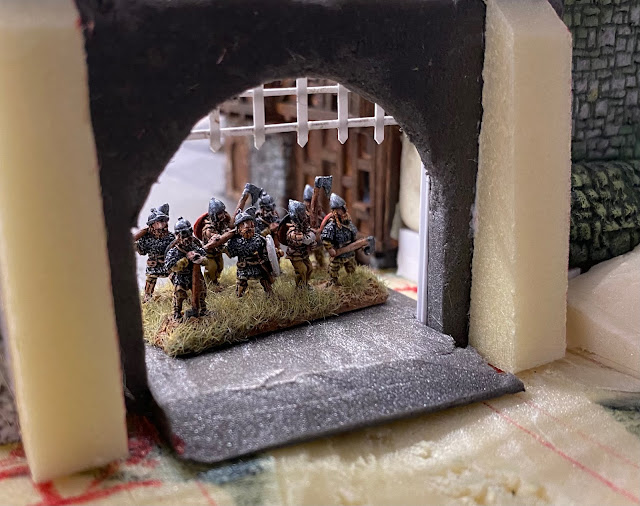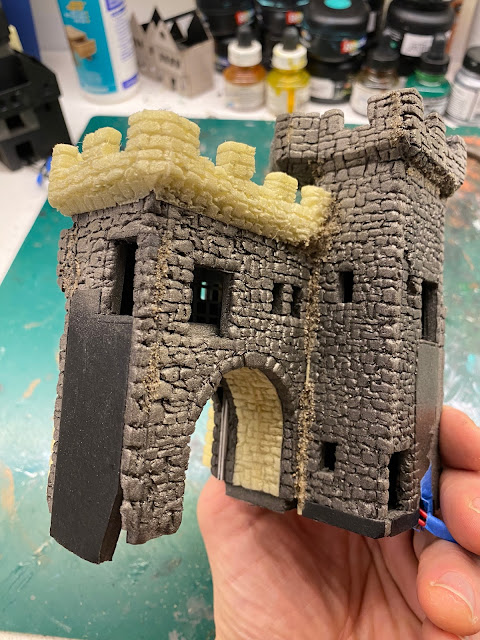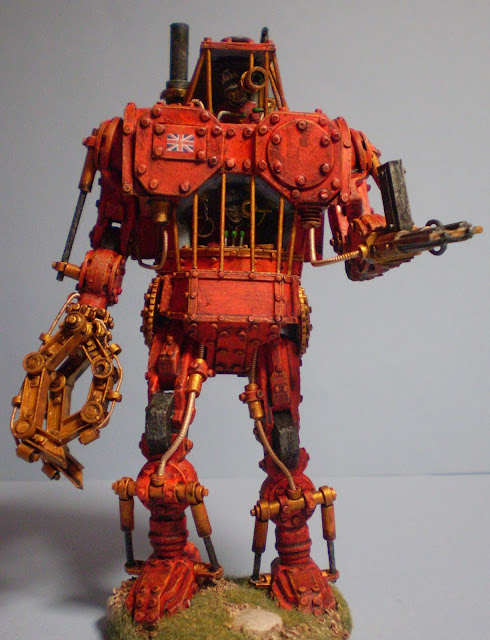Hi All!
 |
| Can you see where I'm going with this one? |
This week I am continuing with the submarine-type-theme thingy that began in May. It seems I can't get away from them!
No sooner had I finished my Nautilus commission, than another challenge came my way! "Colonel, old bean," came the cry, "I have a new challenge for you!"
"A new challenge?" I replied, "That sounds like a new challenge to me!"
And so it was.
Thusly it was that I embarked on a new challenge.
Over the next few posts I shall endeavour to keep you all informed, entertained and otherwise engaged as I embark upon building my versions of none other than Thunderbirds 2 and 4, complete with a removable pod in which the former shall house the latter!
 |
| Goggles - the obvious choice when building a submarine! |
 |
| A singular gog, side view. |
The first stage in this challenge, I decided, was to design and build Thunderbird 4, which in turn would dictate the size of the pod, and ultimately Thunderbird 2. So without further ado, I had a good old rummage around, in search of submariney bits and bobs.
I wanted this piece to have a clear-fronted cabin so that I could show the interior details and (possibly) a pilot. After various, "Hmmms," and "Haaaahs," I decided the only reasonable course of action was to build the thing around a lens from a pair of swimming goggles. Obviously.
 |
| A gog and some other bits! |
 |
| Pieces of the gog were cut away, and a basic frame was built. |
Having mutilated neatly disassembled the goggles, I grabbed a few old bits and bobs and started to put together a basic framework, which would help me gauge the overall scale of the project. This machine needs to make sense as a one-puppet sub, without getting so big that it would result in Thunderbird 2 being absolutely enormous.
 |
| Thin card is added as a base for more details. |
 |
| The fin is constructed from plastic board, a superglue lid and a bit of tube. |
The next thing was to give some thought to a fin, and also how to detail the interior. Just like with The Nautilus, it is necessary to detail and paint the interior before closing it in to work on the rest of the vehicle. Of course, this will soon have to include a pilot before I can go any further.
 |
| The cabin interior begins very simply. |
 |
| As details are added, the canopy is checked in place. And yes - there are rivets! |
The cabin details were constructed very quickly, from card offcuts and bits of plastic tube, with a nice big ring-thingy from something or other that looked perfect to adorn the center of the dashboard.
 |
| The cabin details, painted. Note the addition of a guitar-string conduit |
Once the cabin was detailed, it was painted and a window frame was added to the outside using plastic strip and greenstuff. The inside of the gog was also painted wherever it was not intended to be clear but could be viewed from outside.
Finally, the canopy was slightly trimmed here and there until it fitted in place nice and snugly!
 |
| Not bad so far! Note the plastic press-stud details and the big brass ringy-thing! |
 |
| Side-view. Lots of work to do on the underside! |
 |
| Thunderbirds Are Slightly Go-ish! |
All in all, not a bad start to what looks like being a fun project! I shall keep you all updated as I progress of course, and I shall also post the odd piccy on Instagram, for those of you who follow me there!
And, just in case you thought I had forgotten...
Rivet Count: 18 !
All the Best!
































